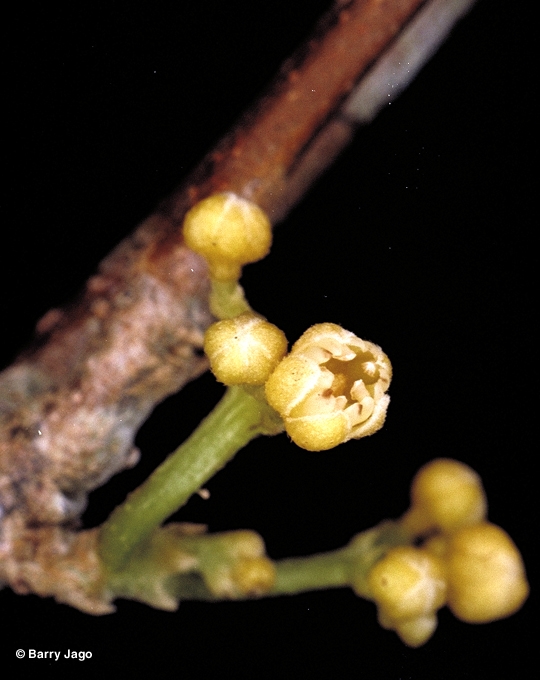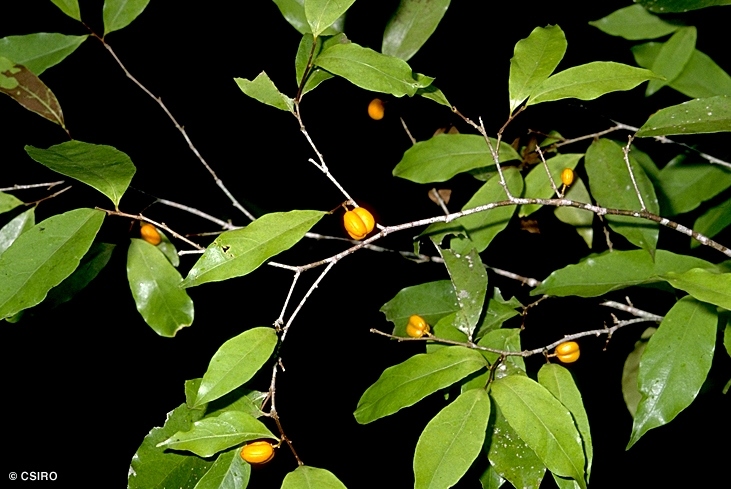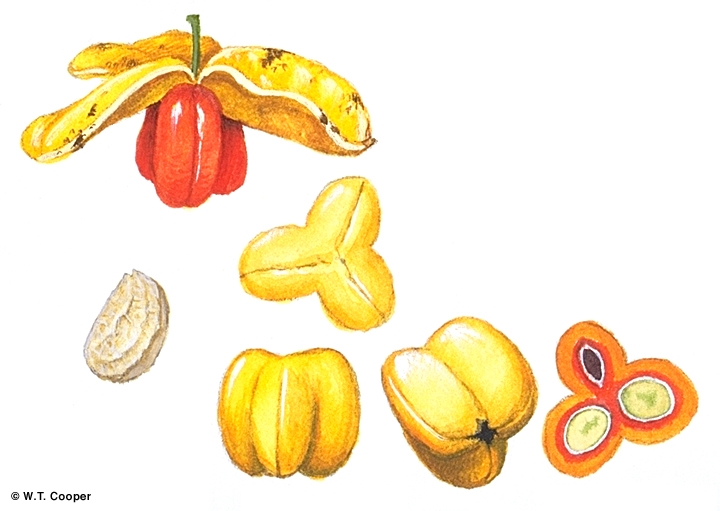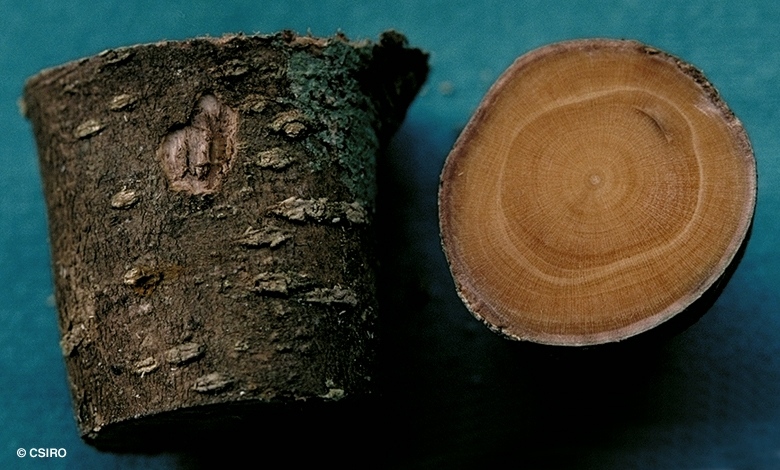Australian Tropical Rainforest Plants - Online edition
Dichapetalum papuanum (Becc.) Boerl.








Boerlage, J.G. (1890) Handleiding tot de Kennis der Flora van Nederlandsch Indie 1: 199.
Can grow into a tree-top vine but often flowers and fruits when still at the shrub stage. Vine stem diameters to 3 cm recorded. Stem wood very tough, hard to cut, lacking vessels or vessels not obvious. Vascular rays obvious when viewed with a lens.
Leaf blades about 7.5-15 x 2.5-5.5 cm, petioles about 0.3-0.6 cm long. Stipules +/- almost linear, hairy, about 1-1.5 mm long, inconspicuous and caducous. Lateral veins about 5-7 on each side of the midrib forming indistinct loops inside the blade margin. Many of the tertiary veins form an angle of about 90 with the midrib. Leaf blades much paler on the underside where the venation is more obvious. The younger leafy twigs usually reddish-brown and marked by pale-coloured lenticels.
Fruit about 10-15 mm diam. Calyx lobes persistent at the base of the fruit. Cotyledons large and fleshy.
First pair of leaves with pale hairs on both the upper and lower surfaces but mainly on the midrib and on the margin. At the tenth leaf stage: stipules small, up to 1 mm long, clothed in pale, prostrate hairs, leaf blade with pale hairs but mainly on the midrib and on the margin. Lateral veins forming loops inside the blade margin. Seed germination time 91 to 202 days.
When this species assumes the stature of a vine the stem wood produced is exceedingly hard with a very high specific gravity. This species should be treated with caution as some species of Dichapetalum produce fluoroacteate which is very poisonous.





